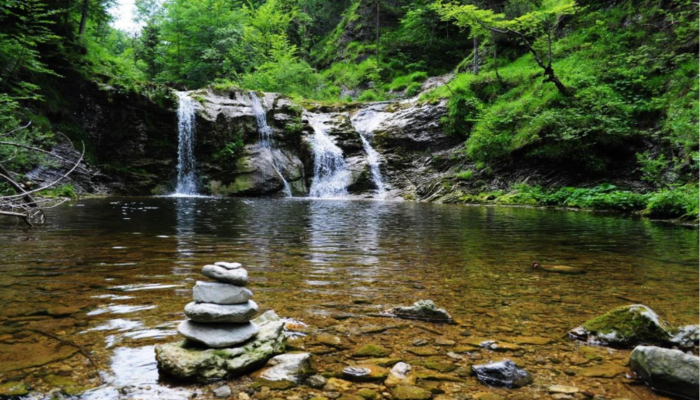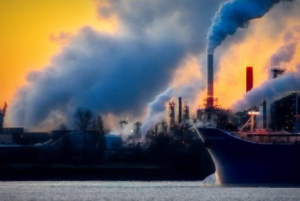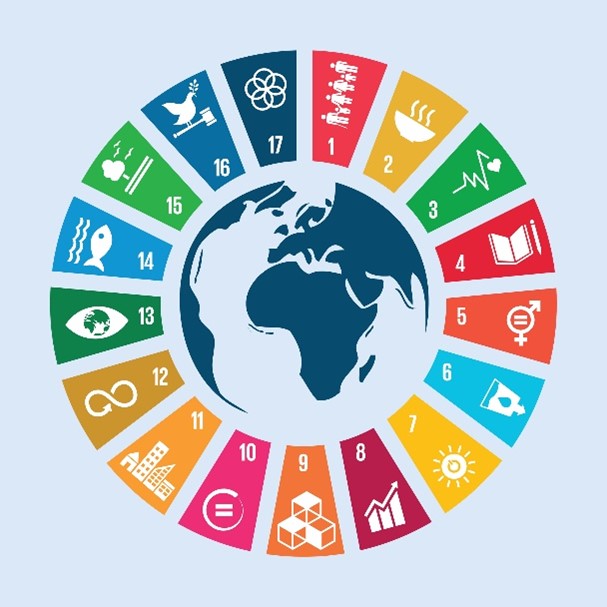
GMPV and The Sustainable Development Goals
In 2015 all United Nations Member States adopted a set of Global Goals, as a universal call to protect our planet, end poverty and ensure that all people can enjoy peace and prosperity. These are called the Sustainable Development Goals – 17 integrated goals aimed at addressing the challenges our society is currently facing considering social, economic, and environmental sustainability.
From decarbonization, to disaster risk reduction and natural resources, geoscience and geoscientists can play a key role in achieving these goals. This blog series will explore how geoscientists, and in particular Geochemists, Mineralogists, Petrologists and Volcanologists, fit into this this framework.
Carbon Capture and Storage
Our previous blogs in this series focused on mineral resources and sustainable mining and geothermal energy. In this post, guest blogger Victoria Corcimaru reflects on the important role of carbonate minerals in carbon capture and storage.
On the 9th of August, the Intergovernmental Panel on Climate Change (IPCC) published it’s sixth assessment report, with a stark warning over the climate emergency. Based on more than 14,000 studies, the landmark report had a few take away points, but one of the key aspects was that “It is unequivocal that human influence has warmed the atmosphere, ocean and land”.
Rising carbon dioxide in the atmosphere can be directly linked to anthropogenic activities, mainly represented by the burning of fossil fuels, and Carbon Capture and Storage (CCS) has been proposed as a potential solution to capturing carbon dioxide (CO2) before it is released into the atmosphere, then transporting and then storing it deep underground. CCS has also been suggested as a possibility to remove CO2 directly or indirectly from the atmosphere.
So how can GMPV researchers help?
Deep geological storage (also known as geo-sequestration) and mineral storage have been identified has the two main ways in which CO2 can be stored. Reports from the Intergovernmental Panel on Climate Change (IPCC) suggested that appropriate geological storage sites could trap CO2 for million of years, while “mineral carbonation” processes, where CO2 reacts with metal oxides during weathering, results in naturally occurring Fe, Mg and Ca stable minerals which stop CO2 from being released back into the atmosphere.
Keen to know more?
Read more about these processes below! ⬇⬇
Carbonate Minerals: the Silent Players of Climate Change
When I think about nature, I can’t help but be amazed at the way all processes are interconnected with each other. Sometimes these connections are not obvious, but they are not any less impressive or important for understanding the world we live in and the current problems in it.

Photo by Chris LeBoutillier from Pexels
Who hasn’t heard about climate change and the negative effects associated with global warming? The lengthy list includes ice melting at poles, rise in sea levels, severe natural calamities, precipitation changes, increase in rainwater acidity, and others (Solomon et al. 2009; Nwaeze et al. 2017). But what makes this list even more distressing, is the fact that human activities in the past century bare a big part of the responsibility for all of this.
But what natural mechanisms are there to help reverse this problem? And is it possible to support them?
One problem is that natural mechanisms to reduce CO2 in the atmosphere are too slow to compensate for the rapid amount of CO2 emissions released by humans.
Locking of CO2 into carbonate minerals is a major natural mechanism to reduce excess CO2 in the atmosphere. As CO2 levels rise in the atmosphere, rainwater becomes more acidic. By encountering carbonate minerals, it dissolves them more rapidly and releases bicarbonate ions into the rainwater solution. These bicarbonate ions act as a CO2 sink. As a result, the water’s pH levels are restored to normal (a neutral 7.0 on the scale from 0 to 14).
But this process does not continue forever. As soon as the CO2 levels at the water-air interphase decrease, the water becomes less acidic, and chemical precipitation of carbonate minerals takes over. Balancing these two opposite processes is important for the water’s ecosystem: a significant change in pH increases the solubility and toxicity of certain chemicals and heavy metals and can be fatal for marine organisms (Fondriest Environmental, 2013).
However, this self-regulating process is relatively slow and has several problems. First, carbonate minerals are not distributed equally in soils or near water. Second, the relatively small contact area of these minerals slows down the reaction rates.
So, to compensate for the rapid CO2 efflux, scientists have come up with the following solution to speed up the natural carbonate weathering process: add powdered carbonate minerals to both soil and water. More carbonates lead to more weathering and thus to faster CO2 reductions in the atmosphere. Sounds effective. However, some waters and soils do not naturally contain carbonate minerals. Studies aimed at assessing potential risks show that a sudden increase in carbonate minerals, or other mineral substances such as silicates, can cause chemical perturbations to biosystems. This is especially true if carbonate minerals are added directly to oceans. The result could be a change in marine species, increasing the population of those which already naturally use carbonate minerals but at the same time restricting other species which don’t. Furthermore, “chemical hotspots”—the places where carbonate powder is dumped into the water—can also have ecological impact. For instance, if the air-water gas exchange is slow, the atmosphere cannot keep “pumping” new CO2 back into the water fast enough to compensate the large amount of CO2 absorbed by carbonate minerals, which disrupt the natural water chemistry in those regions (Bach et al. 2019).
This problem could be bypassed if the carbonate minerals are added into soils first, which act as a filter retaining some of these dissolved minerals from the water. This way, the rainwater which eventually ends up in the ocean would not produce chemical hotspots due to its smaller mineral ion concentration and a more even distribution through naturally established water currents (Bach et al. 2019).
However, this solution is still far from ideal. Marine organisms such as coccolithophores, foraminifera, and pteropods precipitate carbonate minerals to form protective shells. This biological precipitation process reduces water alkalinity and would be increased by 10% in near surface waters because more carbonate ions are available from the added minerals (Bach et al. 2019). If this happens, a part of carbonate minerals introduced into the water would be processed by marine organisms instead of acting as a CO2 sink, which would result in lower efficiency and additional expenditures (since more carbonate minerals are needed to compensate for these biological processes). Also, carbonate minerals can absorb traces of toxic elements (Farmaki et al. 2018). Therefore, if the carbonate minerals are taken from polluted areas and are not purified, the resulting release and accumulation of these toxic elements in ocean waters could cause far worse damage.
However, what is perhaps the most important conclusion, is the acknowledgement of the dynamic role and importance carbonate minerals play in our climate. Understanding this can help us design new solutions for combating pressing issues such as global warming and encourage further investigation of the large-scale impact of minerals on our ecosystems.
About the Author
Meet Victoria Corcimaru, an aspiring geoscientist from the Republic of Moldova and the author of this guest-blog post! Although Victoria is a highschool student at the start of her academic journey, she passionately designs research projects and loves sharing her interest in geology with others!
She has been studying and experimenting with available geoscience resources (for 5 years) on her own because of the limited educational opportunities in her country. This approach let her create a personalized view of geology focused on specific topics of interest and their creative, practical applications. Right now, her work revolves around chemical impacts on the lithosphere caused by anthropic activity and the prospect of solving global issues such as greenhouse gas emissions based on geochemistry.
She sincerely thanks the editors of the EGU GMPV blog, especially Franziska Keller, for being so kind and allowing her to write this guest-blog post!
References: Susan Solomon, Gian-Kasper Plattner, Reto Knutti, Pierre Friedlingstein: “Irreversible climate change due to carbon dioxide emissions”, Proceedings of the National Academy of Sciences Feb 2009, 106 (6) 1704-1709; DOI: 10.1073/pnas.0812721106 Emmanuel Nwaeze, Richard C. Ehiri: “The effect of increasing carbon dioxide level on rainwater: a numeric study of Nigeria”, Journal of Water and Climate Change 1 March 2017; 8 (1): 40–47. doi: https://doi.org/10.2166/wcc.2016.145 Fondriest Environmental, Inc. “pH of Water.” Fundamentals of Environmental Measurements. 19 Nov. 2013. Web. < https://www.fondriest.com/environmental-measurements/parameters/water-quality/ph/ >. Bach LT, Gill SJ, Rickaby REM, Gore S and Renforth P (2019) CO2 Removal With Enhanced Weathering and Ocean Alkalinity Enhancement: Potential Risks and Co-benefits for Marine Pelagic Ecosystems. Front. Clim. 1:7. doi: 10.3389/fclim.2019.00007 Farmaki, Sofia, Vorrisi, Eleni, Karakasi, Olga K. and Moutsatsou, Angeliki: "Effect of limestone and dolomite tailings’ particle size on potentially toxic elements adsorption", Open Geosciences, vol. 10, no. 1, 2018, pp. 726-739.



